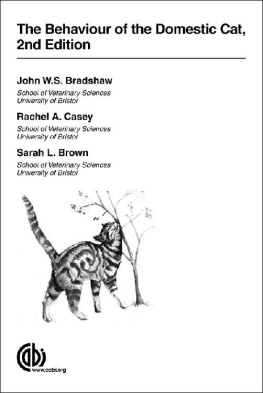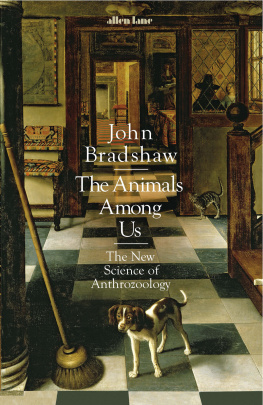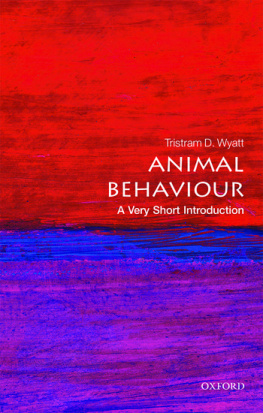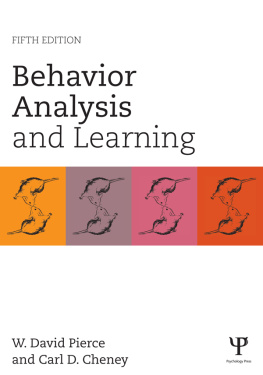THE BEHAVIOUR OF THE DOMESTIC CAT,
2ND EDITION
The Behaviour of the Domestic Cat, 2nd Edition
John W.S. Bradshaw
School of Veterinary Sciences
University of Bristol
Rachel A. Casey
School of Veterinary Sciences
University of Bristol
Sarah L. Brown
School of Veterinary Sciences
University of Bristol
CABI is a trading name of CAB International
CABI | CABI |
Nosworthy Way | 38 Chauncey Street |
Wallingford | Suite 1002 |
Oxfordshire OX10 8DE | Boston, MA 02111 |
UK | USA |
Tel: +44 (0)1491 832111 | Tel: +1 800 552 3083 (toll free) |
Fax: +44 (0)1491 833508 | Tel: +1 (0)617 395 4051 |
E-mail: | E-mail: |
Website: www.cabi.org |
J.W.S Bradshaw, R.A. Casey and S.L. Brown 2012. All rights reserved. No part of this publication may be reproduced in any form or by any means, electronically, mechanically, by photocopying, recording or otherwise, without the prior permission of the copyright owners.
A catalogue record for this book is available from the British Library, London, UK.
Library of Congress Cataloging-in-Publication Data
Bradshaw, John W. S.
The behaviour of the domestic cat / John W.S. Bradshaw, School of Veterinary Sciences, University of Bristol, Rachel A. Casey, School of Veterinary Sciences, University of Bristol, Sarah L. Brown, School of Veterinary Sciences, University of Bristol. -- Second edition.
pages cm
Includes bibliographical references and index.
ISBN 978-1-84593-992-2 (pbk.)
1. Cats--Behavior. I. Casey, Rachel A. II. Brown, Sarah L. III. Title.
SF446.5.B73 2013
636.8--dc23
2012026680
ISBN: 978 1 84593 992 2
Commissioning editor: Rachel Cutts
Editorial assistant: Chris Shire
Production editor: Tracy Head
Typeset by SPi, Pondicherry, India.
Printed and bound in the UK by MPG Books Group.
Contents
Preface to the Second Edition
The behaviour of the domestic cat, Felis silvestris catus, has many features that set it apart from other common domestic animals, even its fellow carnivore the dog. Cats seem to have effected a unique and successful compromise between reliance on man and the retention of behaviour patterns that permit an independent existence. During the first decade of the 21st century the cat has become the preferred pet of many owners, valued because it combines an affectionate nature with a degree of independence, as well as more prosaic qualities such as cleanliness and convenience.
This book brings together many disparate studies of the behaviour of F. catus, and attempts to marry together the more mechanistic approach (how do patterns of behaviour come about?) with the functional (what are those patterns for, and how do they benefit the animal?). It may seem unusual to ask functional questions about the behaviour of a domestic animal, but although for many individual cats both feeding and breeding are largely controlled by man, many others live much more independently and are not only subject to natural selection but, through their predatory behaviour, are themselves a selection pressure on other species. This book therefore covers cats across all their current lifestyles, from neutered pet to fully independent (feral).
Unlike the domestic dog, which has seen a resurgence in research interest over the past decade, several aspects of the cats behaviour have received relatively little attention since the publication of the first edition of this book in 1992. These include the cats sensory and learning abilities and its repertoire of visual signals. However, major advances have been made in several areas, including cat welfare, social behaviour and domestication, and especially in our understanding and treatment of behavioural disorders, coverage of which has been expanded from one chapter to two.
are based around a common theme, that of the cats social abilities. The complex social interactions between cats, many of which we do not yet fully understand, have forced biologists to reinterpret not only the cats relationship with its conspecifics but also the bond with its owner, and considerations of its welfare.
The concluding chapters, building on those that precede them, lay out our current understanding of behaviour problems in cats, divided into those which are essentially normal behaviours for cats but which owners find undesirable (). This framework has been put together primarily by one of us (RAC) from her clinical experience at the University of Bristols Animal Behaviour Clinic (recognized as a centre for clinical training by the European College of Animal Welfare and Behavioural Medicine).
For those interested in reading further, two recent books can be regarded as complementary to this one. Wild Cats of the World, by Mel and Fiona Sunquist, extends the story to the other members of the Felidae. More comprehensive treatments of many of the topics are contained in the multi-author book edited by Dennis Turner and Patrick Bateson, The Domestic Cat: the Biology of its Behaviour, which is about to appear in its third edition. Further suggestions can be gleaned from the list of references, which has been deliberately kept short, by using review articles rather than research papers wherever possible, to avoid breaking up the text with large numbers of citations.
Many of our friends and colleagues have helped us with this book, by making suggestions, providing references, allowing us to present their unpublished research and reading drafts of chapters. In no particular order, they are Sandra McCune, Carlos Driscoll, David Macdonald, Michael Mendl, Ian Robinson, Stuart Church, John Allen, Sarah Lowe (Benge), Ruud van den Bos, Charlotte Cameron-Beaumont, Giles Horsfield, Sarah Hall, Sylvia Vandenbussche, Kim Hawkins, Elizabeth Paul, Carri Westgarth, Emily Blackwell, Kristen Kly, Maryanne Heard, Jenna Kiddie, Anne Seawright and Christine Basse. The responsibility for what appears on the printed pages is, of course, ours alone. Our sincere gratitude also goes to Alan Peters for his ink-and-wash sketches of kittens and cats. Our own research, and that of our students, reported here has been supported by the Waltham Centre for Pet Nutrition, the Biotechnology and Biological Sciences Research Council and the Universities Federation for Animal Welfare. We are especially grateful to Cats Protection for supporting research and academic posts over the past two decades, a contribution that has significantly enhanced scientific understanding of cat behaviour and welfare, and its application in clinical practice.
1 The Cat: Domestication and Biology
Introduction
The domestic cat is by far the most numerous of all the cat family, the Felidae, most of whose other members are listed as approaching or vulnerable to extinction (Macdonald and Loveridge, 2010). While the derivation of the domestic cat from wildcats is far from being completely understood, from a biological point of view relationships between domestic animals and their wild counterparts are crucial to a full understanding of behaviour. This is because it is one of the basic principles of modern ethology that species-specific behaviour patterns contain an inherited component, and therefore can be compared from species to species as if they were a morphological character, like the shape of the skull. While it is possible to study the behaviour of the domestic cat in isolation, we are likely to gain more insight into the origins of many behaviour patterns if we can compare them to those of related undomesticated species. Having said that, behavioural studies of closely related species are sparse, other than the big cats, notably the lion.
Next page















